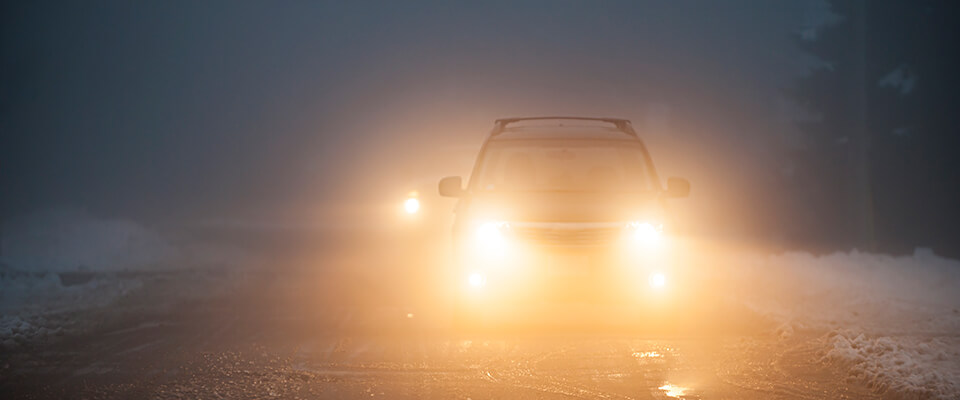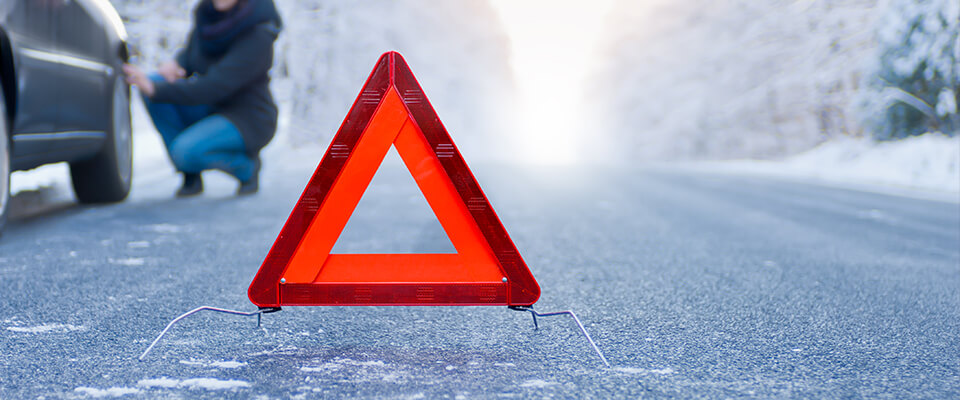Winter brings dark nights and wet & icy weather, so it’s important to ensure that you’re prepared to drive in these conditions. AXA has created this guide with some key tips to help you drive safely in winter.
1. Make sure your car is winter-ready
It’s important to care for your car and ensure it’s safe to drive during the winter months. Follow this checklist to prepare your car for the wintery weather conditions ahead:
- Check your tyres: Winter tyres are not compulsory by law in Northern Ireland, however, it's important to make sure that the tread and pressure are correct on your tyres for optimal grip on the road. Tyres should have the minimum legal tread depth of 1.6mm.
- Get the battery checked: Did you know battery faults are the most common cause of winter breakdowns? If your battery is older than 5 years old, get it checked by a mechanic to avoid getting caught out in the cold temperatures.
- Check the wiper blades: Make sure they’re not cracked or rubbing so they’re effectively clearing your windscreen. If they’re not clearing your windscreen effectively, go to your mechanic or a motor service shop to get new wiper blades installed.
- Check headlamps, brake lights and indicators: Check if the lights on your car are working and if any are broken, you should go to a mechanic to get them replaced as soon as possible. If there is snow or icy weather it’s important to ensure that your lights are clear of any snow or ice before you drive.

2. Drive carefully
Winter weather can make driving very tricky. Here are some tips to keep in mind to help you drive safely on the road in winter:
- Slow down: This may seem obvious but it’s especially important to slow down when snow sticks on the road. As snow compacts and hardens, it makes the road surface slippery and ice can form.
- Increase your braking distance: It takes longer to stop on the road in rain and snow, so leave twice as much space between yourself and the car in front of you.
- Turn on your headlights: If the rain or snow is particularly heavy, make sure your headlights are on, even in daylight.
- What to do if your car slides: If you find your car sliding on icy or wet roads, don’t panic and don’t use your brakes as this could make it worse. Instead, turn your wheels in the same direction you’re sliding and straighten the wheel as the car straightens.
3. Carry a safety kit in the boot
Did you know breakdowns are more common during the winter? Be prepared for whatever might come your way and pack a safety kit. Here’s what to include:
- Reflective triangles to place on the road
- Ice scraper
- Extra antifreeze
- First aid kit
- Torch and matches
- High-vis vest or jacket
- Warm Clothing
- Hat and gloves
- Water and snacks
- Flares

4. Be prepared to take more time
When the weather is poor, people will drive more slowly. Be prepared for this and leave lots of time when you’re heading out in bad weather. It’s always best to prioritise safety over punctuality so be patient with other drivers so that you’ll get to where you’re going to safely.
If the weather is extremely bad, try to stay off the road. If you must go out, remember tips for driving safely and be sure to take your time.
Don’t forget to insure your car so you’ve got peace of mind that you’re protected while on the road.


